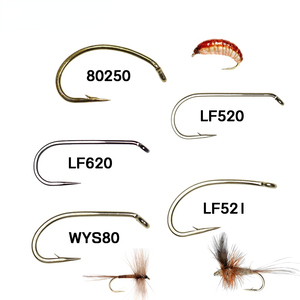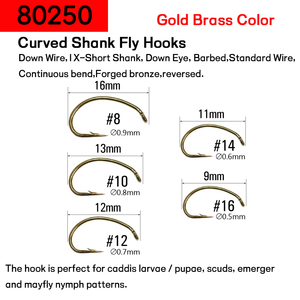Introduction to Fly Fishing Nymph Types
Fly fishing nymph types are an essential component of any angler's tackle box, providing an effective way to mimic the natural prey of fish underwater. These sub-surface flies are designed to imitate the larval stages of aquatic insects, which are a significant food source for game fish. Understanding the various fly fishing nymph types helps anglers select the best options for different fishing conditions, improving their chances of a successful catch. In this article, we will explore the different types, their functions and features, suitable scenarios for use, and how to choose the right nymphs for your fly fishing endeavors.
Types of Fly Fishing Nymph Types
Fly fishing nymphs come in a variety of forms, each imitating specific aquatic insects at different stages of their lifecycle. Here's a breakdown of the most common fly fishing nymph types:
- Mayfly Nymphs: These nymphs feature slender bodies and are often tied in shades of brown, olive, or yellow. They closely resemble the juvenile stage of mayflies.
- Caddisfly Nymphs: Characterized by a robust body, caddisfly nymphs are generally darker and more chunkier, often with a shaggy appearance, mimicking the natural habitat conditions.
- Stonefly Nymphs: Known for their longer and more elongated bodies, stonefly nymphs are typically larger and can have a variety of colors, usually tied in darker shades to reflect their environments.
- Scud and Shrimp Nymphs: These nymphs are mimicked using materials that create a stocky appearance, resembling freshwater shrimp or scuds. They are often bright in color, which can attract fish.
Function and Feature of Fly Fishing Nymph Types
The primary function of fly fishing nymph types is to entice fish by closely matching the appearance and behavior of natural prey. The following features enhance their effectiveness:
- Realistic Appearance: Nymphs are meticulously crafted to mimic real insects, complete with segmented bodies, realistic legs, and antennae.
- Weight Variation: Many nymphs are weighted to sink quickly, allowing them to reach the underwater feeding lanes where fish are lurking.
- Flexible Tying Materials: A blend of synthetics and natural materials might be used to create movement and lifelike textures that draw fish in.
- Size Diversity: Nymphs come in various sizes, allowing anglers to match the hatch or target specific species of fish based on local conditions.
Scenarios for Using Fly Fishing Nymph Types
Understanding the ideal scenarios for deploying different fly fishing nymph types can greatly affect your fishing outcome. Here are essential contexts to consider:
- High Water Conditions: In swift water, using heavier nymphs can help maintain depth and stability in fast currents.
- Cold Water: During colder months, fish are more lethargic, making a slower presentation of nymphs necessary for enticing bites.
- After Hatches: Post-hatch, juvenile nymphs may be more present, making it crucial to match these life stages when fishing.
- Still Water Fishing: In lakes and ponds, nymphs can be effective when targeting trout feeding below the surface, especially in the early morning or late evening.
How to Choose the Right Fly Fishing Nymph Types
Selecting the appropriate fly fishing nymph types can be a game changer. Here are factors to consider when making your choice:
- Water Conditions: Observe the water clarity, temperature, and current speed to determine which nymphs will be most effective.
- Fish Behavior: Monitor fish activity to identify if they're feeding on the surface or sub-surface to select the right nymph.
- Match the Hatch: Research the local hatches to choose nymphs that imitate the prevalent aquatic insects.
- Experimentation: Don’t hesitate to try different nymph types and sizes until you find the specific patterns that yield results in your fishing area.

















































